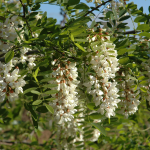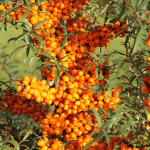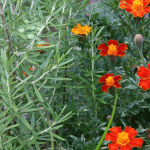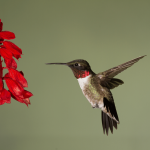Beneficial Shrubs for Pollinators: Choosing the Right Species for Your Eco-Friendly Garden
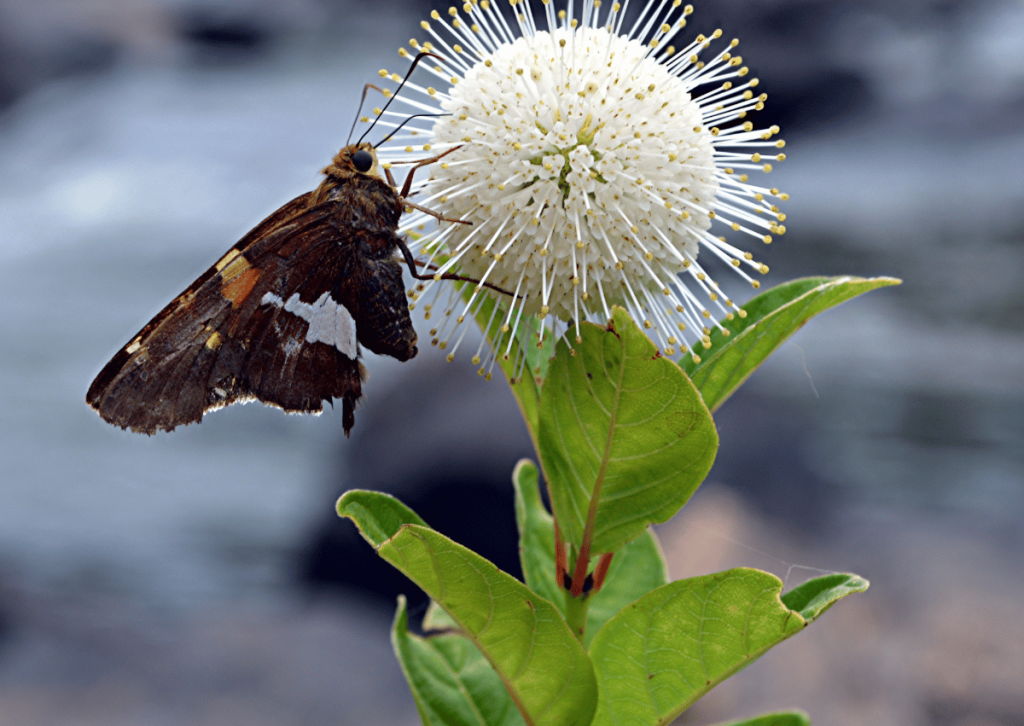
Pollinators play a crucial role in maintaining the health and productivity of our ecosystems, making it essential to create gardens that support their needs. In this article, we’ll explore the importance of choosing the right shrubs for your eco-friendly garden, focusing on both native and non-invasive non-native species that provide valuable resources for pollinators. By incorporating these beneficial shrubs into your garden, you’ll not only be creating a haven for pollinators but also contributing to a more sustainable and biodiverse environment.
Learn how to choose the right native and non-invasive non-native shrubs to create an eco-friendly garden that supports and attracts a diverse range of pollinators.
In the sections that follow, we will discuss the role of shrubs in providing food, shelter, and nesting opportunities for various pollinators. We’ll highlight top native and non-invasive non-native shrubs that are well-suited for temperate climates, along with planting and maintenance tips to help you cultivate a thriving pollinator habitat. Finally, we’ll touch on the importance of creating a diverse pollinator-friendly garden that benefits both the environment and the creatures that rely on it.
Why Shrubs Matter for Pollinators
Shrubs are often overlooked when it comes to creating pollinator-friendly gardens. However, they play a vital role in supporting a diverse range of pollinators by providing essential resources, including food, shelter, and nesting opportunities. By understanding the importance of shrubs and carefully selecting native and non-invasive non-native species, you can create a more sustainable and eco-friendly garden that caters to the needs of various pollinators.
One of the primary reasons shrubs are so important for pollinators is that they offer a reliable food source. Many shrubs produce an abundance of flowers, which provide nectar and pollen for bees, butterflies, and other pollinating insects. Flowering shrubs can serve as a critical food source for pollinators, especially during times when other plants may not be blooming. In addition, some shrubs produce fruits or berries that attract birds, which can also contribute to pollination by spreading seeds as they fly from one location to another.
Shrubs also provide essential shelter and nesting opportunities for pollinators. The dense branching structure of many shrubs creates a safe haven for insects, birds, and other small creatures, protecting them from predators and harsh weather conditions. For example, many species of native bees and solitary wasps use the hollow stems of shrubs as nesting sites. Additionally, some birds, like the Eastern Bluebird, choose to nest in the thickets formed by shrubs, which offer them protection and cover from potential threats.
Including both native and non-invasive non-native shrubs in your garden can offer several advantages. Native shrubs are well-adapted to local environmental conditions, which means they typically require less maintenance and are more resistant to pests and diseases. They have also evolved alongside native pollinators, making them highly attractive to these beneficial insects and birds. By incorporating native shrubs into your garden, you can support local ecosystems and promote biodiversity.
Non-invasive non-native shrubs can also be a valuable addition to your garden, as long as they don’t pose a threat to native ecosystems. These plants can offer extended bloom times or unique flower shapes, attracting a wider range of pollinators and providing additional food sources when native plants may not be in bloom. When selecting non-native shrubs, it’s essential to choose species that are not invasive and won’t outcompete or harm native plants.
Furthermore, incorporating a mix of native and non-invasive non-native shrubs in your garden can help support a more diverse range of pollinators. Different pollinators have unique preferences and requirements when it comes to the plants they visit for food and shelter. By providing a variety of shrubs with different flower shapes, colors, and blooming periods, you’ll be able to accommodate the needs of various pollinators and create a more resilient and biodiverse garden.
In conclusion, shrubs play a significant role in supporting pollinators by providing essential resources like food, shelter, and nesting opportunities. By carefully selecting a combination of native and non-invasive non-native shrubs for your eco-friendly garden, you can create a diverse and thriving pollinator habitat that benefits both the environment and the creatures that rely on it. In the following sections, we’ll explore some top native and non-invasive non-native shrubs for temperate climates, along with planting and maintenance tips to help you cultivate a beautiful and pollinator-friendly garden.
Top Native Shrubs for Pollinators
When selecting native shrubs for your eco-friendly garden, it’s important to consider the unique characteristics of each species, including their preferred growing conditions, bloom times, and the specific pollinators they attract. In this section, we’ll explore several native shrubs that are well-suited for temperate climates, providing essential resources for a diverse range of pollinators.
- Serviceberry (Amelanchier spp.)
Serviceberry shrubs are prized for their delicate white flowers that bloom in early spring, providing an essential source of nectar and pollen for pollinators like bees and butterflies. As an added bonus, these shrubs produce edible berries in the summer that attract birds and other wildlife. Serviceberries are adaptable to various soil types and can tolerate partial shade to full sun. - Red-twig Dogwood (Cornus sericea)
Red-twig dogwood is known for its bright red stems, which provide striking winter interest. This native shrub produces clusters of small white flowers in late spring, attracting bees and butterflies. The flowers give way to white berries, which provide food for birds. Red-twig dogwood prefers moist soil and can be grown in full sun to partial shade. - Buttonbush (Cephalanthus occidentalis)
Buttonbush is an excellent native shrub for attracting pollinators, with its unique spherical white flowers that bloom in mid to late summer. The fragrant flowers are a favorite of bees, butterflies, and hummingbirds. Buttonbush thrives in wet soil conditions and can be planted in full sun to partial shade. - New Jersey Tea (Ceanothus americanus)
This low-growing native shrub produces clusters of small white flowers in late spring to early summer, attracting a variety of pollinators, including bees, butterflies, and hummingbirds. New Jersey Tea is a nitrogen-fixing shrub, meaning it improves soil fertility, making it an excellent addition to an eco-friendly garden. It prefers well-drained soil and full sun to light shade. - Spicebush (Lindera benzoin)
Spicebush is a versatile native shrub that offers multiple benefits for pollinators. Its small, fragrant yellow flowers bloom in early spring before the leaves emerge, providing an early nectar source for bees and other pollinators. The foliage serves as a host plant for the Spicebush Swallowtail butterfly caterpillar. Spicebush prefers moist, well-drained soil and can be grown in full sun to full shade. - Viburnum (Viburnum spp.)
Viburnum species are popular native shrubs for their showy, fragrant flowers that bloom in spring, attracting a variety of pollinators, including bees, butterflies, and even beetles. The flowers are followed by colorful berries that provide food for birds. Viburnums can be grown in various soil types and prefer full sun to partial shade. - Elderberry (Sambucus spp.)
Elderberry shrubs are valuable for pollinators and wildlife alike. Their large clusters of creamy white flowers bloom in late spring to early summer, attracting bees, butterflies, and other pollinators. The flowers later give way to edible berries, which are a favorite of birds and can also be used to make jams, wines, and other treats. Elderberries prefer well-drained soil and can be grown in full sun to partial shade. - Inkberry (Ilex glabra)
Inkberry is an evergreen native shrub that boasts small, inconspicuous white flowers in late spring. These blooms offer nectar to bees and other pollinators, ensuring your garden stays vibrant and lively. After the flowering season, Inkberry produces small black berries that persist throughout winter, providing a valuable food source for birds and other wildlife. This hardy, versatile shrub is a fantastic addition to any eco-friendly garden.
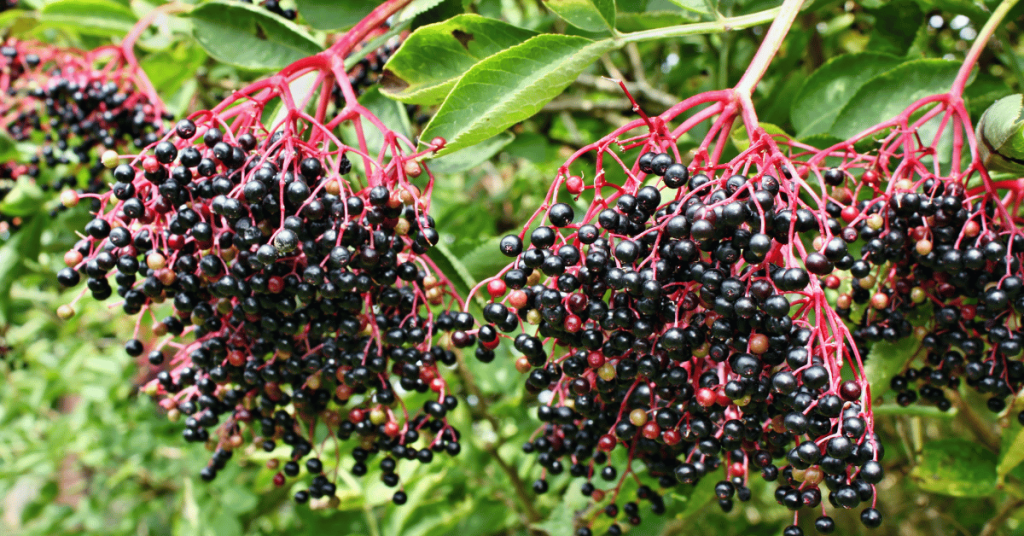
Top Non-Invasive Non-Native Shrubs for Pollinators
In addition to native species, non-invasive non-native shrubs can provide valuable resources for pollinators in temperate climates. These shrubs can offer extended bloom times, unique flower shapes, or additional food sources when native plants may not be in bloom. In this section, we’ll explore several non-invasive non-native shrubs that are beneficial for pollinators and well-suited for temperate eco-friendly gardens.
- Butterfly Bush (Buddleja davidii)
Butterfly bush, as the name suggests, is a magnet for butterflies, as well as bees and hummingbirds. This non-native shrub produces long, fragrant flower spikes in shades of purple, pink, white, or yellow throughout the summer. It is essential to choose sterile or low-fertility cultivars to prevent potential invasiveness. Butterfly bush prefers well-drained soil and full sun. - Caryopteris (Caryopteris x clandonensis)
Caryopteris, also known as bluebeard or blue mist shrub, produces clusters of small, blue flowers from late summer to early fall, making it an excellent late-season nectar source for bees and butterflies. This non-invasive shrub is drought-tolerant and prefers well-drained soil and full sun. - Russian Sage (Perovskia atriplicifolia)
Although Russian sage is technically classified as a subshrub, its height and structure make it function similarly to a shrub in the garden. This non-native plant produces tall spikes of lavender-blue flowers throughout the summer, attracting bees, butterflies, and other pollinators. Russian sage is drought-tolerant and prefers well-drained soil and full sun. - Winter Honeysuckle (Lonicera fragrantissima)
Winter honeysuckle is a non-invasive deciduous shrub known for its highly fragrant, creamy-white flowers that bloom in late winter to early spring, providing an essential early nectar source for bees and other pollinators. This adaptable shrub prefers well-drained soil and can be grown in full sun to partial shade. - Abelia (Abelia x grandiflora)
Abelia is a non-native evergreen or semi-evergreen shrub that produces an abundance of small, tubular flowers from late spring to early fall, attracting bees, butterflies, and hummingbirds. This low-maintenance shrub is adaptable to various soil types and prefers full sun to partial shade. - Lavender (Lavandula spp.)
Lavender, while technically an herbaceous perennial, can develop a woody base over time, giving it a shrub-like appearance. Lavender produces fragrant spikes of purple flowers from late spring to early summer, which are highly attractive to bees, butterflies, and other pollinators. Lavender is drought-tolerant and prefers well-drained soil and full sun. - Hydrangea (Hydrangea spp.)
Hydrangeas are non-native shrubs known for their large, showy flower clusters that bloom in various shades of pink, blue, white, or purple, depending on the soil’s pH. While not all hydrangea species are highly attractive to pollinators, some, like the panicle hydrangea (Hydrangea paniculata), offer a valuable nectar source for bees and other pollinating insects. Hydrangeas prefer well-drained, moist soil and can be grown in full sun to partial shade. - Fothergilla (Fothergilla spp.)
Fothergilla is a non-native deciduous shrub with bottlebrush-like white flowers that bloom in early spring, providing an essential nectar source for bees and other pollinators. The flowers are followed by attractive, blue-green foliage that turns brilliant shades of red, orange, and yellow in the fall, adding seasonal interest to your garden. Fothergilla prefers well-drained, acidic soil and can be grown in full sun to partial shade. - Sweet Box (Sarcococca spp.)
Sweet Box is a non-native evergreen shrub that produces small, fragrant white flowers in late winter to early spring, offering a valuable early-season nectar source for pollinators. The flowers are followed by small, shiny black fruits that persist through the winter. Sweet Box is adaptable to various soil types and can be grown in full shade to partial sun, making it an excellent choice for shady garden areas. - Chaste Tree (Vitex agnus-castus)
The chaste tree is a non-native shrub or small tree that produces spikes of fragrant, lavender-blue flowers from late spring to early fall, attracting bees, butterflies, and hummingbirds. This drought-tolerant plant prefers well-drained soil and full sun.
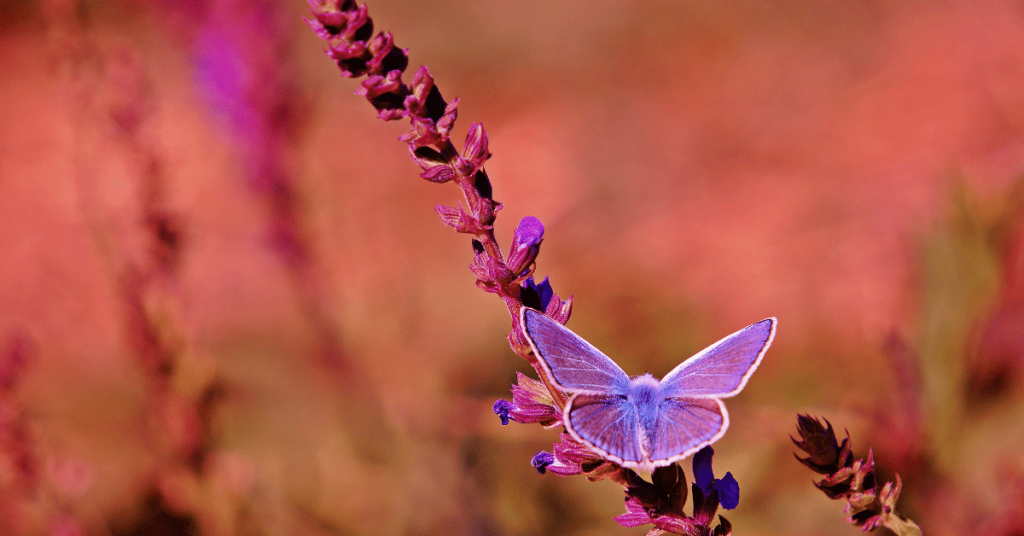
Caution with Non-Native Species: Research and Responsibility for a Sustainable Garden
While incorporating non-native, non-invasive plants into your pollinator-friendly garden can offer a range of benefits, it’s crucial to be aware that what is considered non-invasive in one region may pose a threat to native ecosystems in another. Different geographic areas have distinct climates, soils, and ecosystems, and a plant that is well-behaved in one location might become invasive in another.
To ensure that your garden remains eco-friendly and doesn’t inadvertently contribute to the spread of invasive species, it’s essential to thoroughly research each plant you plan to introduce to your garden. Consult local horticultural experts, native plant societies, or extension services for guidance on which non-native plants are considered safe and appropriate for your specific region.
Additionally, we have a separate article on our website that delves deeper into this issue: “The Benefits of Non-Invasive, Non-Native Species.” In this article, you can learn more about the advantages of including non-invasive, non-native plants in your garden, as well as precautions to take when selecting and planting them. By being well-informed and diligent in your plant choices, you can create a diverse, pollinator-friendly garden that supports local ecosystems without causing harm.
Visit our article at https://www.hugelkulturworks.com/the-benefits-of-non-invasive-non-native-species/ to learn more about responsibly incorporating non-native, non-invasive plants into your garden.
By incorporating a mix of native and non-invasive non-native shrubs into your eco-friendly garden, you can create a diverse and thriving pollinator habitat that benefits both the environment and the creatures that rely on it. In addition to selecting the right species, it’s essential to consider proper planting techniques and maintenance practices to ensure the health and success of your garden.
In the following section, we’ll explore planting and maintenance tips for creating a pollinator-friendly garden, including spacing, pruning, and pesticide use considerations to help you cultivate a healthy and biodiverse landscape.
Planting and Maintenance Tips for a Pollinator-Friendly Garden
To create a thriving pollinator-friendly garden, it’s essential to consider not only the right plant species but also proper planting techniques and maintenance practices. By following these tips, you can ensure that your garden is a healthy and supportive habitat for pollinators and other beneficial creatures.
- Plant Diversity
A diverse selection of plants ensures that various types of pollinators have access to the resources they need throughout the growing season. Plant a mix of native and non-invasive non-native species, including flowering shrubs, perennials, and annuals. Aim for a continuous succession of blooms from early spring to late fall to provide nectar and pollen sources when pollinators are most active. - Plant in Clusters
Grouping plants of the same species together in clusters or drifts makes it easier for pollinators to locate and access their preferred food sources. Planting in clusters also creates a visually appealing landscape and can improve the overall health of your plants by encouraging better air circulation and reducing the spread of diseases. - Provide a Variety of Flower Shapes and Sizes
Different pollinators have different feeding preferences and anatomies, so it’s essential to include a variety of flower shapes and sizes in your garden. Tubular flowers like butterfly bush and abelia are ideal for long-tongued pollinators like butterflies and hummingbirds, while flat or shallow flowers like yarrow and Queen Anne’s lace are better suited for short-tongued bees and beetles. - Choose Plants with Different Bloom Times
To ensure a continuous food supply for pollinators, select plants with varying bloom times. Include early-blooming species like winter honeysuckle and serviceberry, mid-season bloomers like viburnum and elderberry, and late-season flowers like caryopteris and goldenrod. - Provide Habitat and Nesting Sites
In addition to food sources, pollinators also need safe places to nest and overwinter. Leave some areas of your garden undisturbed, such as brush piles, fallen logs, or patches of bare soil, to provide a habitat for ground-nesting bees and other insects. Additionally, consider installing bee houses or nesting boxes for cavity-nesting bees and other beneficial insects. - Use Organic and Sustainable Gardening Practices
Pesticides, herbicides, and synthetic fertilizers can harm pollinators and disrupt the delicate balance of your garden’s ecosystem. Practice organic and sustainable gardening methods, like using compost and mulch to improve soil fertility, employing natural pest control methods like beneficial insects, and hand-weeding instead of using chemical herbicides. - Water Wisely
Like all living creatures, pollinators need water to survive. Provide a shallow water source in your garden, like a bird bath or a shallow dish filled with water and stones for insects to land on. Be mindful of your water use, and choose drought-tolerant plants when possible to conserve water and create a more sustainable landscape. - Proper Pruning and Deadheading
Pruning and deadheading can encourage healthy growth and extended bloom times, benefiting both your plants and the pollinators that rely on them. Prune deciduous shrubs in late winter or early spring before new growth begins, and remove spent flowers regularly to promote continuous blooming. - Plant for Shelter
Incorporate trees, shrubs, and other plants that provide shelter from wind and rain for pollinators. This can include evergreen plants like hollies, pines, and cedars, as well as deciduous trees and shrubs that offer dense foliage for cover.
By following these planting and maintenance tips, you can create a pollinator-friendly garden that is both beautiful and ecologically responsible.
Conclusion
Creating a pollinator-friendly garden is an essential step towards supporting local ecosystems, promoting biodiversity, and contributing to a more sustainable environment. By choosing the right combination of native and non-invasive non-native shrubs, along with implementing responsible planting and maintenance practices, you can transform your garden into a thriving haven for pollinators and other beneficial species.
A well-designed pollinator garden not only benefits the environment but also enhances the beauty and productivity of your own outdoor space. The inclusion of diverse plant species with varying bloom times, flower shapes, and sizes ensures that your garden is visually appealing and remains vibrant throughout the growing season. Moreover, a garden that supports pollinators also contributes to the overall health and vitality of your plants, as many of the fruits, vegetables, and flowers we enjoy depend on these hardworking creatures for pollination.
When planning what shrubs to include in your pollinator-friendly garden, it’s essential to consider factors such as plant diversity, bloom times, and the provision of shelter and nesting sites for pollinators. In addition, adopting sustainable gardening practices, such as organic pest control methods and water conservation, can help create a more ecologically responsible landscape that supports the long-term health of pollinators and other wildlife.
However, your positive impact on pollinators doesn’t have to stop at your property line. By getting involved in your community, advocating for pollinator-friendly public spaces, and educating others about the importance of pollinators, you can help inspire a broader movement towards more sustainable and ecologically responsible landscapes. Participating in local gardening clubs, volunteering at community gardens or nature centers, and supporting local conservation organizations can further amplify your efforts in promoting pollinator-friendly gardening.
As you embark on your journey towards becoming a pollinator-friendly gardener, remember that your efforts not only contribute to the health and vitality of your own garden but also make a meaningful difference in supporting the ecosystems that sustain all life on our planet. By choosing to create a garden that nurtures and supports pollinators, you’re taking an important step towards a more sustainable and biodiverse future. So, go ahead, plant those beneficial shrubs, and watch your garden come alive with the buzz and flutter of these essential, hardworking creatures.
Explore More: Trees to Boost Your Pollinator Sanctuary
Ready to take your pollinator-friendly garden to the next level? Don’t miss our article on the “Best Trees for Supporting Native Pollinators in Temperate Climates.” Expand your knowledge and create an even more thriving, biodiverse sanctuary for pollinators. Check it out now at https://www.hugelkulturworks.com/best-trees-for-supporting-native-pollinators-in-temperate-climates/.

